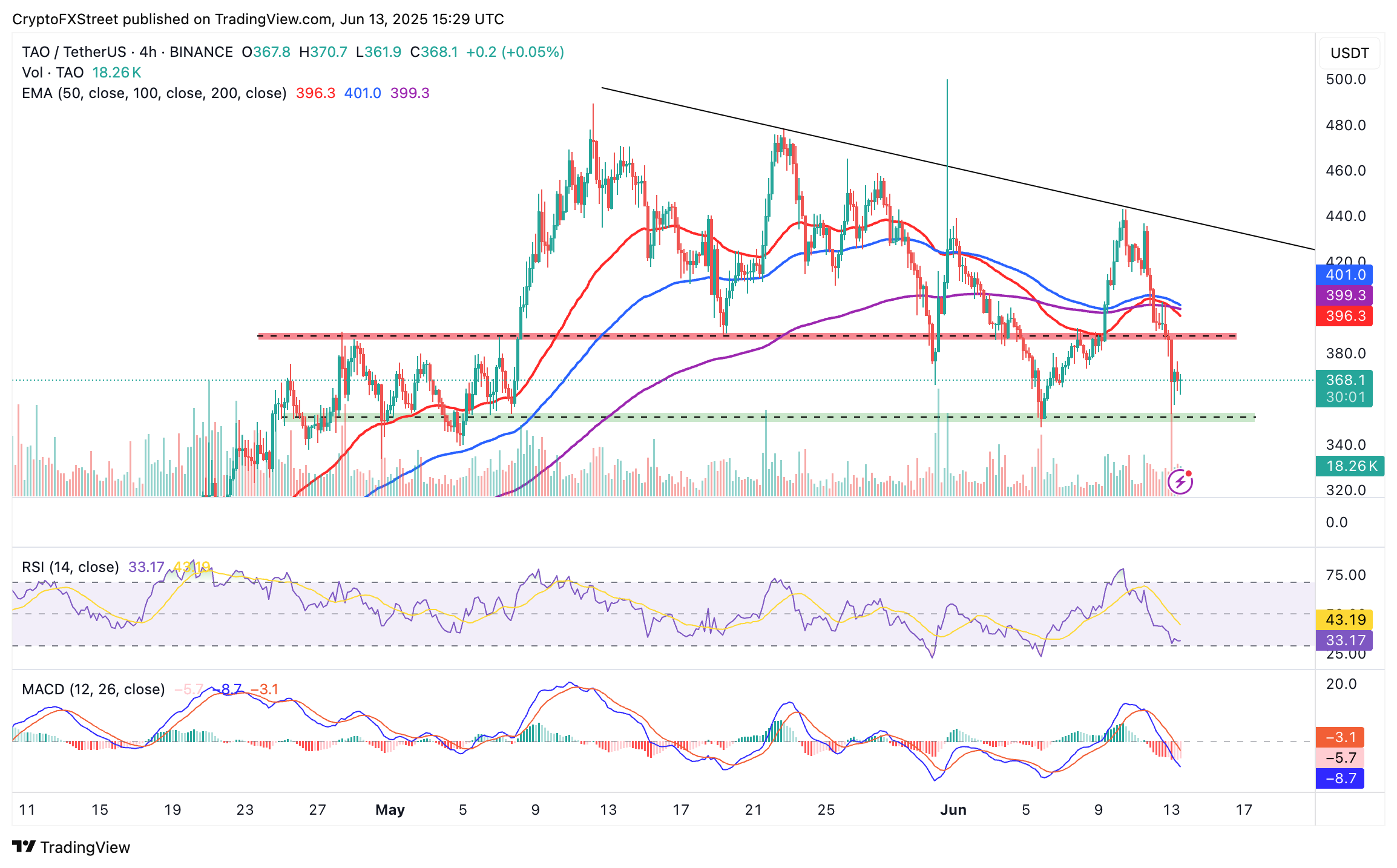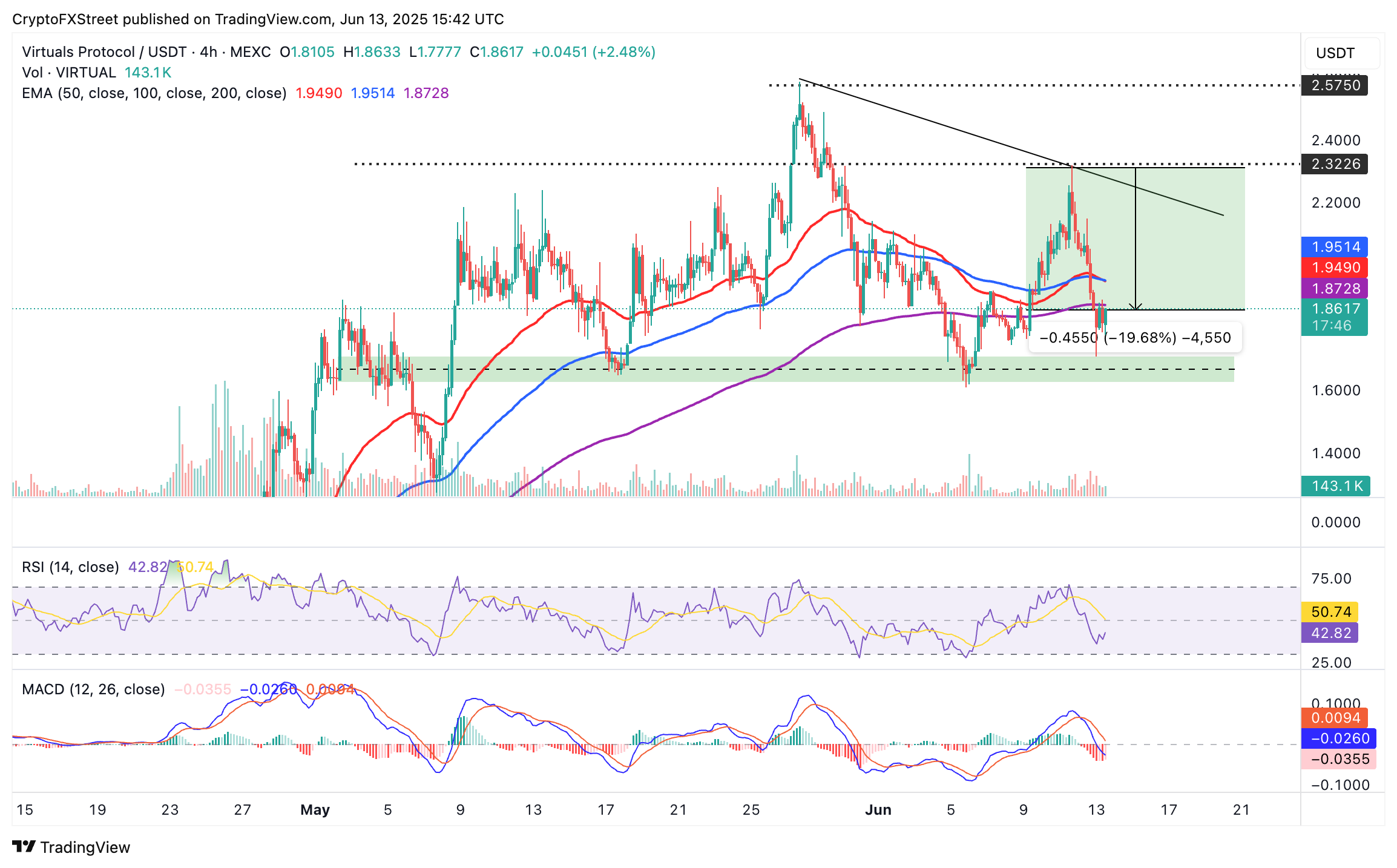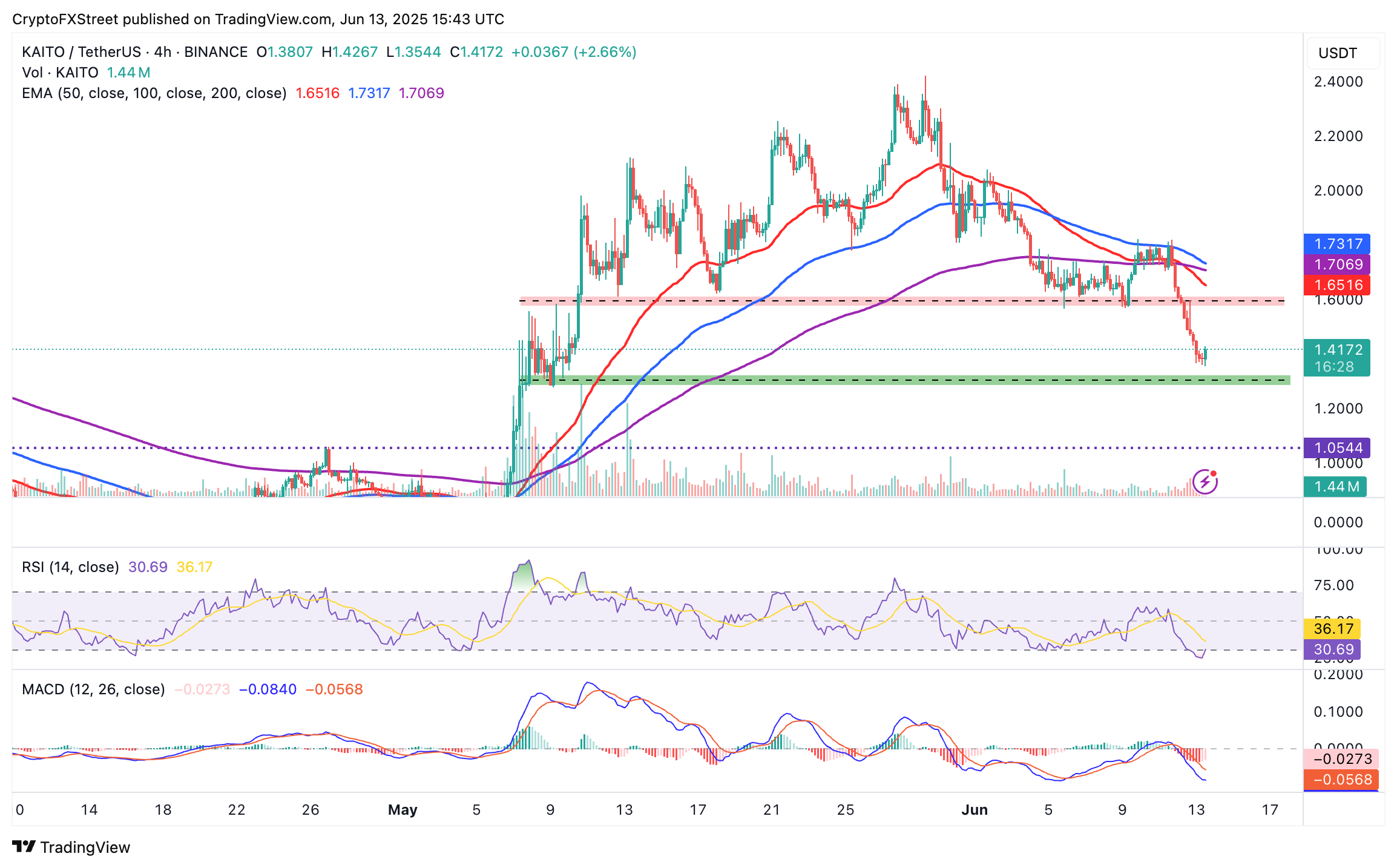AI Tokens Primed for Weekend Rebound: Bittensor, Virtuals Protocol, Kaito Eye Recovery
AI-focused cryptocurrencies show signs of life after brutal week—traders bet on weekend liquidity pumps.
Bittensor (TAO) leads the charge as AI narrative regains momentum. Virtuals Protocol''s niche positioning and Kaito''s search-focused utility could outperform in thin weekend markets.
Watch for classic ''Sunday Funday'' price action—where low-volume rallies make bagholders briefly forget their losses. Just don''t tell the SEC about those ''organic'' green candles.
Bittensor offers signs of recovery
Bittensor, the open-source protocol utilizing blockchain technology to advance a decentralized network for machine learning AI models, is trading at $366 at the time of writing.
The token is currently trading below the 4-hour 50-period Exponential Moving Average (EMA), which is at $396, the 100-period EMA at $399, and the 200-period EMA at $401, indicating a technical bearish bias.
The Moving Average Convergence Divergence (MACD) indicator has sustained a sell signal on the 4-hour chart, which was validated on Wednesday when the blue MACD line crossed below the red signal line. If the sell signal persists, traders could reduce exposure to TAO, contributing to the overhead pressure and increasing the possibility of the decline extending below the $350 short-term support to $340.

TAO/USDT 4-hour chart
On the other hand, the Relative Strength Index (RSI) approaches the oversold area in the 4-hour time frame, signaling a potential recovery during the weekend session. Traders will monitor the RSI’s potential reversal toward the 50 midline to validate the likelihood of a recovery aimed at $400.
Virtuals Protocol paring losses
Virtuals Protocol, the AI agent network, is reversing the trend, trading at around $1.85 at the time of writing. With the RSI reversing above 40 and moving toward the 50 midline, the path of least resistance is slowly shifting north, increasing the probability of a major recovery in the upcoming weekend session.
Traders will monitor the price action for a break above the 200-period EMA resistance at $1.87, which could pave the way for gains beyond the confluence hurdle at around $1.95. The 50-period EMA and the 100-period EMA converge here to reinforce the resistance.

VIRTUAL/USDT 4-hour chart
Despite the potential recovery, market participants should temper bullish expectations, considering the sell signal sustained by the MACD indicator since Thursday. The red histogram bars extending below the center line (0.00) reinforce the bearish grip on the AI token.
Kaito bulls defend key support
Kaito’s price shows subtle signs of recovery despite a 2% decline on the day and a 22% drop from the lower high of $1.81, reached on Wednesday. The token exhibits an oversold RSI, with the potential to influence a short-term recovery as volatility in the broader crypto market cools.

KAITO/USDT daily chart
The RSI offers signs of reversing into neutrality and extending the recovery toward the 50 midline as the price lifts above the $1.40 level. Several potential 4-hour closes above this key WOULD encourage traders to buy the dip, thus increasing the intensity of the tailwind and the likelihood of a sharp move to the next key resistance at $1.60.
Cryptocurrency prices FAQs
How do new token launches or listings affect cryptocurrency prices?
Token launches influence demand and adoption among market participants. Listings on crypto exchanges deepen the liquidity for an asset and add new participants to an asset’s network. This is typically bullish for a digital asset.
How do hacks affect cryptocurrency prices?
A hack is an event in which an attacker captures a large volume of the asset from a DeFi bridge or hot wallet of an exchange or any other crypto platform via exploits, bugs or other methods. The exploiter then transfers these tokens out of the exchange platforms to ultimately sell or swap the assets for other cryptocurrencies or stablecoins. Such events often involve an en masse panic triggering a sell-off in the affected assets.
How do macroeconomic releases and events affect cryptocurrency prices?
Macroeconomic events like the US Federal Reserve’s decision on interest rates influence crypto assets mainly through the direct impact they have on the US Dollar. An increase in interest rate typically negatively influences Bitcoin and altcoin prices, and vice versa. If the US Dollar index declines, risk assets and associated leverage for trading gets cheaper, in turn driving crypto prices higher.
How do major crypto upgrades like halvings, hard forks affect cryptocurrency prices?
Halvings are typically considered bullish events as they slash the block reward in half for miners, constricting the supply of the asset. At consistent demand if the supply reduces, the asset’s price climbs.

